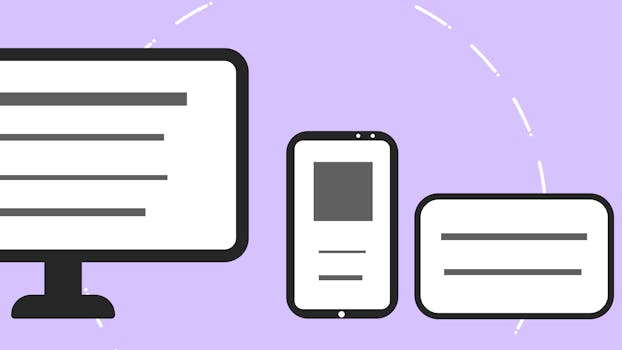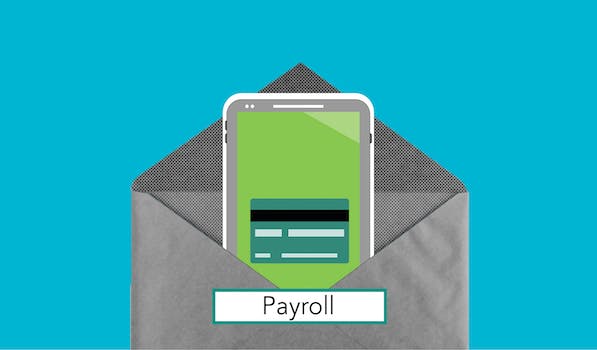Financial flexibility is a vital aspect of managing your personal finances. It allows you to navigate unexpected expenses, pursue your goals, and make the most of opportunities that come your way. But how exactly can you achieve financial flexibility? One powerful tool that can help you in this endeavor is a line of credit.
In this article, we will delve into the concept of a line of credit and explore its potential to unlock financial flexibility. We will discuss what a line of credit is, how it works, and the benefits it offers. We will also provide tips on using a line of credit wisely and address the pros and cons associated with this financial tool. By the end, you will have a comprehensive understanding of how a line of credit can empower you to achieve a greater level of financial freedom.
What is a Line of Credit?
A line of credit is a form of credit extended to an individual or business by a financial institution. Unlike a traditional loan, where you receive a lump sum of money upfront and repay it over a predetermined period, a line of credit provides you with a predetermined credit limit that you can draw from as needed. You have the flexibility to borrow the exact amount you require at any given time, up to the maximum credit limit.
One key difference between a line of credit and a loan is that with a line of credit, you only incur interest on the amount you borrow, rather than the entire credit limit. This makes it a more cost-effective option in situations where you may not need the full amount immediately.
The features and benefits of a line of credit make it a versatile tool for managing your finances. Whether you’re facing unexpected expenses, making home renovations, or investing in education, a line of credit can provide you with the necessary financial support.
How Does a Line of Credit Work?

Understanding the mechanics of a line of credit is essential for making the most of this financial tool. When you are approved for a line of credit, you are assigned a credit limit, which is the maximum amount you can borrow. You have the freedom to withdraw funds from your line of credit as needed, up to this pre-established limit.
When you borrow from the line of credit, you will only be responsible for repaying the amount you have withdrawn, plus any interest and fees that may apply. As you repay the borrowed amount, those funds become available to be borrowed again.
Interest rates on lines of credit can be either fixed or variable. A fixed interest rate remains the same throughout the borrowing period, providing stability and predictability in your repayment schedule. On the other hand, a variable interest rate can fluctuate over time, depending on market conditions.
In addition to interest, some lines of credit may carry fees, such as an annual maintenance fee or a fee for each withdrawal. It is important to carefully review the terms and conditions of your line of credit agreement to understand any associated costs.
Unlocking Financial Freedom with a Line of Credit

A line of credit offers incredible flexibility when it comes to managing your finances. It can be used for a variety of purposes, including emergency expenses, home renovations, and education costs. Let’s explore these scenarios in more detail to understand how a line of credit can provide the financial support you need.
Emergency Expenses: Life is full of unexpected events that can take a toll on your finances. Whether it’s a medical emergency, car repairs, or a sudden job loss, having access to a line of credit can provide a safety net. Instead of draining your savings or relying on expensive credit cards, you can use your line of credit to cover these unforeseen expenses and then repay the borrowed amount at a pace that suits your budget.
Home Renovations: Your home is your most significant investment, and maintaining its value is crucial. However, renovations or repairs can be costly, and it may not always be feasible to pay for them upfront. A line of credit can give you the ability to make the necessary improvements to your home, enhancing both its aesthetic appeal and its resale value. With a line of credit, you can carefully plan your renovations and borrow only what you need, avoiding unnecessary debt.
Education Costs: Investing in education is an investment in yourself or your loved ones’ future. Whether you are pursuing higher education or supporting a child’s educational journey, the costs can be substantial. A line of credit can provide a flexible source of funding to cover tuition fees, textbooks, and other educational expenses. By utilizing a line of credit, you can focus on your studies or your loved ones’ education without worrying about the immediate financial implications.
In addition to these examples, a line of credit can be useful for various other financial needs, such as consolidating higher-interest debt, covering business expenses, or taking advantage of investment opportunities. The key is to consider your financial goals and use the line of credit strategically to achieve them.
Tips for Using a Line of Credit Wisely
While a line of credit can be a powerful financial tool, it is essential to use it responsibly. Here are some tips on how to make the most of your line of credit while avoiding potential pitfalls:
Set Clear Limits: Before utilizing your line of credit, determine how much you actually need and set a borrowing limit accordingly. This will help you avoid the temptation to borrow more than necessary.
Create a Repayment Plan: It’s important to have a plan in place for repaying the borrowed funds. Consider your budget and set aside a portion of your income to make regular payments towards the line of credit. By doing so, you can avoid accumulating unnecessary interest charges and effectively manage your debt.
Avoid Overborrowing: While a line of credit offers flexibility, it can also lead to overborrowing if not used carefully. Evaluate your financial situation and borrowing needs objectively to ensure you are not taking on more debt than you can comfortably handle.
Monitor Your Credit Score: Your credit score plays a crucial role in your eligibility for a line of credit, as well as the interest rate you will be offered. Keeping a close eye on your credit score and taking steps to improve it can help you secure better terms and conditions on your line of credit.
Pay Attention to Interest Rates: Whether your line of credit has a fixed or variable interest rate, it’s important to understand how it can impact your repayments. If you have a variable interest rate, monitor the market and consider locking in a fixed rate if you expect interest rates to rise.
By following these tips, you can use your line of credit strategically and avoid falling into a cycle of debt. Responsible usage will ensure that a line of credit remains a valuable tool for achieving financial flexibility.
Pros and Cons of a Line of Credit
As with any financial product, there are both advantages and disadvantages to consider when it comes to a line of credit. Let’s take a closer look at the pros and cons of using a line of credit:
Advantages:
-
Flexibility: A line of credit provides you with the flexibility to borrow and repay on your terms, giving you greater control over your financial situation.
-
Lower Interest Rates: Generally, lines of credit offer lower interest rates compared to credit cards, making it a more cost-effective borrowing option.
-
Revolving Credit: With a line of credit, you have a revolving credit facility, meaning you can borrow, repay, and borrow again, which can be useful during fluctuating cash flow periods.
-
Customizable Limits: You have the ability to set your credit limit as per your specific needs, ensuring you borrow only what is required.
-
Access to Funds: Once approved for a line of credit, you can access the funds immediately, providing you with a financial safety net and peace of mind.
Disadvantages:
-
Temptation to Overspend: Due to its flexibility, a line of credit may tempt you to borrow beyond your means, potentially leading to excessive debt.
-
Accumulation of Interest: If you do not repay the borrowed funds in a timely manner, the interest charges can add up, resulting in increased debt.
-
Potential Fees: Some lines of credit may have associated fees, such as annual maintenance fees or withdrawal fees, which can impact the overall cost.
-
Qualification Requirements: To access a line of credit, you typically need a good credit score and a stable income, which may limit eligibility for some individuals.
It’s important to weigh these pros and cons carefully to determine if a line of credit is the right option for you. Consider your financial goals, borrowing needs, and ability to manage debt before applying for a line of credit.
How to Qualify for a Line of Credit
Qualifying for a line of credit typically requires meeting certain criteria set by the financial institution. While these criteria can vary, here are some factors that commonly influence eligibility:
-
Credit Score: A good credit score is essential for securing a line of credit. Lenders assess your credit score to determine your creditworthiness and the risk associated with lending to you. A higher credit score can increase your chances of approval and potentially result in more favorable interest rates.
-
Income: Lenders want assurance that you have a stable income to support your borrowing needs and repay the line of credit. Typically, a higher income increases your chances of qualifying for a higher credit limit.
-
Employment Stability: Demonstrating a consistent employment history can also play a role in qualifying for a line of credit. Lenders want to see that you have a stable job and income source to ensure timely repayment.
-
Debt-to-Income Ratio: Lenders assess your debt-to-income ratio to determine your ability to take on additional debt. Ideally, your monthly debt obligations should not exceed a certain percentage of your income.
-
Collateral: Depending on the type of line of credit, you may be required to provide collateral as security. Collateral can be in the form of assets, such as a home or a vehicle, which can be seized by the lender in the event of non-payment.
If you do not meet the criteria for a traditional line of credit, there are alternative options available. These include secured lines of credit, where you provide collateral, or seeking out alternative lenders who may have different qualification requirements. It is advisable to consult with a financial professional to explore the best options based on your unique circumstances.
Final Take: Embracing Financial Flexibility with a Line of Credit
In conclusion, a line of credit is a powerful tool for unlocking financial flexibility. Whether you need funds for unexpected expenses, home renovations, or educational pursuits, a line of credit gives you the flexibility to borrow and repay according to your needs. By using it wisely and responsibly, you can effectively manage your cash flow and achieve a higher level of financial freedom.
Remember to set clear limits, create a repayment plan, and avoid overborrowing to prevent falling into a cycle of debt. While a line of credit offers numerous advantages, it’s important to consider the potential pitfalls and weigh them against your financial goals.
If you qualify for a line of credit, it can serve as a valuable financial resource. However, if you are unable to meet the criteria, there are alternative options available. The key is to explore and leverage the options that best align with your unique circumstances and financial objectives.
Unlocking financial flexibility is within your reach. Consider incorporating a line of credit into your personal financial strategy and take the first step toward achieving your financial goals.
